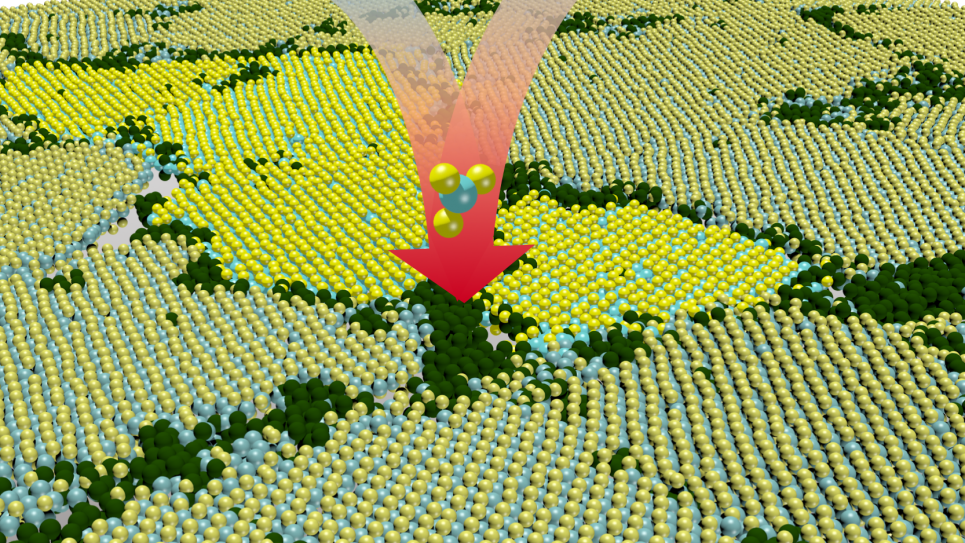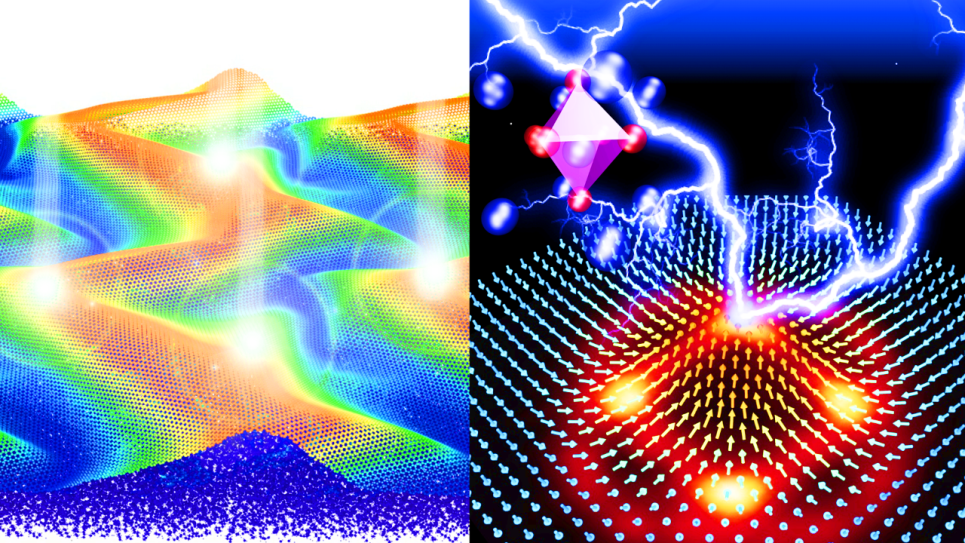
Ultrafast Control of Functional Materials
This project aims to achieve ultrafast control of functional materials via confluence of leadership-scale quantum dynamics simulations, machine learning (ML) and cutting-edge x-ray free- electron laser (XFEL) experiments.
Recent advancements in ultrafast materials science have raised the possibility of using picosecond light pulses to switch emergent material properties on demand in various functional materials. Such ultrafast and high-quantum-efficiency switching of material properties (e.g., polarization and conductivity) has the potential to revolutionize future information and energy technologies. With this INCITE project, researchers from the University of Southern California leverage leadership-scale quantum dynamics simulations, machine learning, and x-ray free-electron laser (XFEL) experimental data to extend the frontier of ultrafast materials science.
State-of-the-art XFEL and ultrafast electron diffraction (UED) experiments now provide unprecedented capability to observe light-induced material dynamics with sub-nanometer spatial and sub-picosecond time resolutions. By observing the motions of electrons and atoms at their natural time scales, these experiments help accelerate ultrafast control of quantum-material properties. Understanding the complex far-from-equilibrium quantum dynamics from first principles, however, poses an enormous computational challenge that necessitates the use of leadership computing resources.
Building on the success of previous INCITE awards, the University of Southern California team is using the Theta supercomputer to predict ultrafast function-property-structure relationships that dictate lightcontrol of emergent material properties in complex nanostructures composed of three classes of advanced functional materials: (1) layered-material heterostructures and magic-angle heterostacks; (2) novel chalcogenide perovskites; and (3) topological skyrmions superlattices.The researchers are performing 104-atom nonadiabatic quantum molecular dynamics (NAQMD) and billion-atom reactive molecular dynamics (RMD) simulations that not only mirror far-from-equilibrium electronic and lattice dynamics in next-generation XFEL experiments at the forthcoming Linac Coherent Light Source (LCLS-II) at exactly the same space and time scales, but also provide fundamental understanding of their structural transition pathways and electronic origins, which is critical for the advancement of emerging ultrafast materials science.
